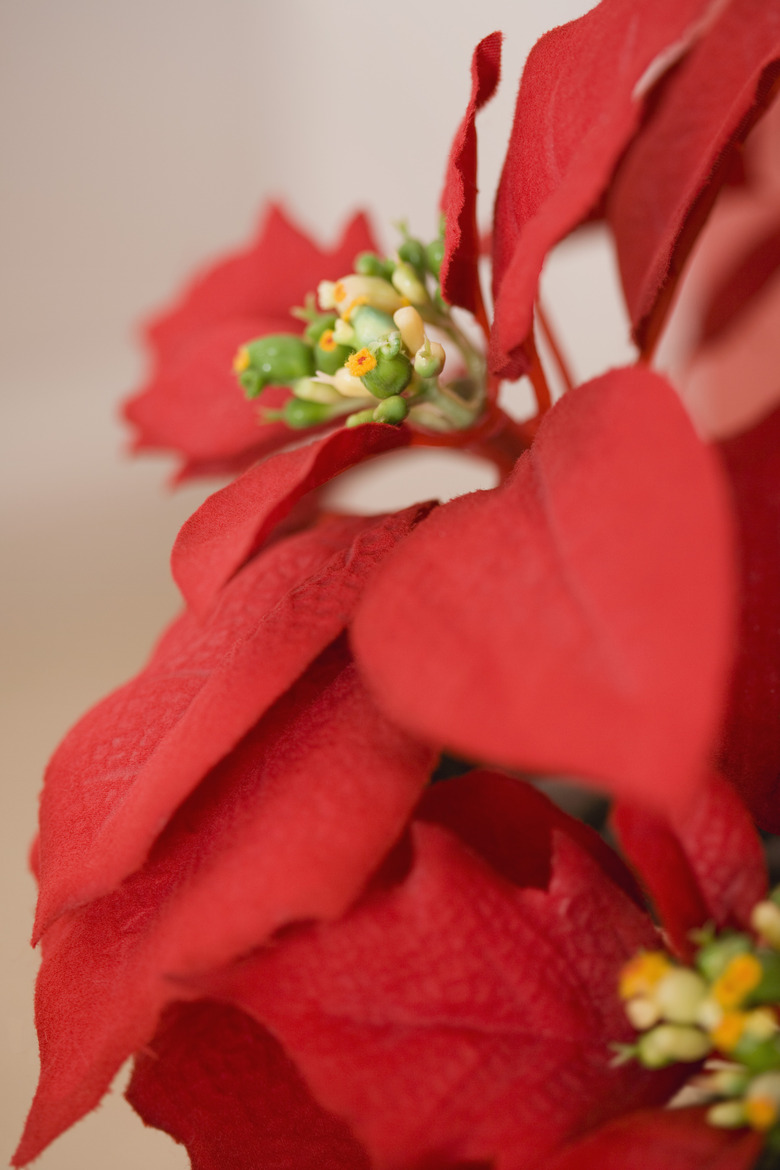What Happens When A Poinsettia Secretes A Milky Substance?
The quintessential floral symbol of Christmas across North America, the poinsettia (Euphorbia pulcherrima) is a tropical shrub native to Mexico, where it is known as the flor de Nochebuena. As a member of the spurge family (Euphorbiaceae) poinsettias have a milky sap. This latex helps conserve moisture within the plant and deters animals and insects from eating the plant, since the latex is bitter and toxic if eaten in large doses. If your potted poinsettia bleeds white sap, it has sustained an injury.
Sap
Sap
It's easy to spot sap oozing from a poinsettia plant because of the watery but white latex composition. This whiteness contrasts with the dark green of leaves, or the various colors of the bracts. Only on white- or cream-colored bracts would the sap be slightly camouflaged. Initially, the white sap bleeds and runs quickly if the wound is large. Although many Americans think the poinsettia is a highly toxic houseplant, this is somewhat exaggerated. Mild chemical toxins exist in the sap and can cause temporary skin rashes. It will likely cause a stomach ache if eaten, potentially with nausea and diarrhea — and, in some cases, more serious effects. For that reason, even though poinsettia is generally not as poisonous as commonly believed, that doesn't mean you should ever ingest it, as some people can still have severe individual reactions. Most notably, do not let children or pets eat the plants, as their smaller body weight may cause more adverse reactions to the toxins in the plant.
Causes
Causes
Sap is contained within all tissues of a poinsettia. Sap oozes only when tissues are damaged, such as deliberately cutting off a leaf or trimming the plant. Disrupting the vascular tissues allows sap to bleed or secrete onto the stem or leaves. Lightly brushing or wrapping a potted poinsettia may still cause tissue damage. Snapping the tips of green leaves or colored bracts may seem minor, but often a tiny dot of white sap occurs from the wound.
Plant Response
Plant Response
Once the sap is exposed to air, it begins to dry and partially coagulate. Lots of sap may bleed from a large stem being snapped, but much less from a broken vein on the leaf tip. Over several minutes, depending on temperature and ambient humidity, the white latex sap dries to become more clear. It eventually ages to sooty black. The sap drying seals off the plant wound, preventing further desiccation of plant tissues. Callused wounds also prevent any diseases, fungi or insects from gaining access to the plant's vascular system.
Plant Cleaning
Plant Cleaning
Once the sap dries on the poinsettia — when it becomes clear and then blackens — don't try to wash or rub it off. You risk breaking the leaf, bract or stem or rupturing more veins to cause more sap secretions. To avoid running smears or dots of dried sap, you may carefully insert the edge of a paper towel or facial tissue into the wound to soak up sap when it's fresh, watery and white. This is the easiest and safest way to preserve the colored bracts on the blooming poinsettia without causing more damage or seeing black sap stains later.
